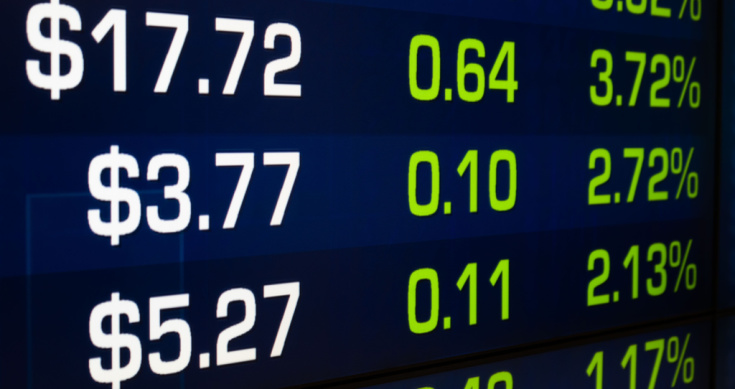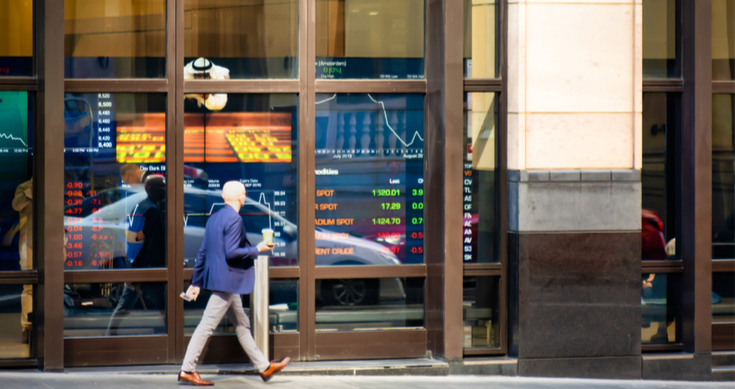The German giant Bayer is buying the US giant Monsanto to make the world’s largest acquisition of 2016. Immediately Aussie investors focus in on the next take-over that might be hiding on the ASX. Kevin Hua and Hugh Dive walk us through the opportunities and impacts on the ASX.
World’s largest seed and agricultural chemical supplier
“After months of negotiations, Bayer (BAYN GR) announced the proposed acquisition of Monsanto (MON US) for US$128 per share,” explains Kevin Hua co-founder at Atlas Trend.
“The US$66 billion acquisition is the largest ever undertaken by a German company and the largest announced transaction this year,” says Hua.
“If successful, the deal would create the world’s largest seed supplier and chemical supplier for agriculture,” continues Hua.
“This Bayer/Monsanto acquisition follows the announced merger plans of Dow Chemical (DOW US) and DuPont to create a new crop-science business and China National Chemical Corp’s proposed acquisition of Syngenta (SYNN VX), a Swiss manufacturer of seeds and pesticides,” details Hua
“However, the Bayer/Monsanto deal is far from done as the two companies must jump significant antitrust / competition hurdles as it seeks approval in 30 jurisdictions globally and even if successful, will not close until late 2017,” say Hua.
“This acquisition would also raise concerns that farmers and agricultural companies affiliated with those farmers will have less choice and also face rising costs from such a dominant player” explains Hua.
“Monsanto’s shares closed at US$106.76, a 16.6% discount to the deal price, reflecting the view that the market believes this transaction is still a long way off from completion” explains Hua.
Take-over targets on the ASX
Following the news of 2016’s largest acquisition, Australian investors quickly sift through their filters trying to find the next take-over target in this industry.
Hugh Dive, Senior Portfolio Manager at Aurora Funds Management walks us through the companies that investors have looked to first.
Nufarm (NUF.ASX)
“NUF is the only listed ASX company that actually will face some impact from Bayer/Monsanto,” says Dive.
“NUF is a direct competitor to the combined Bayer/Monsanto in both the herbicide space with their nascent seed tech business,” explains Dive.
“In the longer term Bayer/Monsanto will outspend the $2bn market cap NUF on Research and Development (R&D), widening the gap, though this depends on what technological transfers NUF gets via major shareholder Sumitomo Chemicals,” says Dive.
An interesting point of scale is that “In 2016 NUF spent AU$39M on R&D, in 2015 MON alone spent US$1.5 billion on R&D, that’s 75% of NUF’s Market cap.”
Graincorp (GNC.ASX):
“Whilst GNC has ‘grain’ in their name, they don’t produce seeds per se,” explains Dive.
However “GNC make money through the velocity of grain through the East Coast system via storage & logistics, marketing and the processing of grain (mainly wheat, barley and canola). What GNC need is high volumes running through their fixed asset base & then exported out of Australia, this is generally a function of higher rainfall on the East Coast during winter,” says Dive.
The Bayer/Monsanto deal looks to have “minimal impact” says Dive.
Elders (ELD.ASX):
Australian Investors look to Elders as an agriculture company, although the times have definitely changes over the year because “ELD hasn’t been investment grade for close to a decade” explains Dive.
Drawing on a distant memory from his presentation in 2011 to a Global Chemicals conference in New York, Dive recalls that “as a retailer of agricultural products (35% of ELD), ELD on-sell Bayer/Monsanto’s products.”
Asking Dive what potential impacts this merger could have on ELD, he thinks “the merger could cause the prices of seeds and pesticides to increase (mainly specialist GM seeds) to go up, that could result in reduced sales to farmers, but as a retailer they buy products wholesale and add a margin & seed demand is relatively inelastic.”
“The rest of ELD’s business is agency services, such as livestock, wool and grain trading (buying and selling on behalf of farmers).” Says Dive. All of which “will have little impact.”
Orica (ORI.ASX)
Chemicals manufacturer ORI is the first place investors have looked for opportunity, but there is little connection between ORI and the Bayer/Monsanto deal.
“Realistically the Bayer/Monsanto merger will have as much impact on Orica as it would on Transurban” explains Dive. The point to note is that “Orica’s business is commercial explosives and blasting systems & mining chemicals; primarily NaCN (Sodium cyanide) which is used in leaching gold out of ore & is not an agricultural product,” says Dive.
Incitec (IPL.ASX)
Being in the Agruicultural segment investors have also queried how the Bayer/Monasnto acquisition will impact IPL. As with ORI, the impact on IPL will be limited, although at least IPL produces something related to agriculture.
“Approximately 30% of IPL’s profit comes from the manufacture of fertilizers namely DAP (Di-Ammonium Phosphate) & urea, with the residual coming from global mining explosives,” explains Dive.
“On the fertilizers side I also struggle to see the impact. In agriculture you need a seed (MON/Bayer), pesticide/herb/fungicide to control nasties that eat the plant (also Mon/Bayer), water (from the sky) and fertilizer (produced by IPL). The last piece is not impacted by MON/Bayer tie up as they are not involved in this part of the chain,” says Dive.
When looking at IPL it is worth noting that there is “potential tie up between Agrium & Potash which will have an impact on IPL” explains Dive. “Albeit a positive one, as two large players in the fertiliser industry will act to reduce production to support prices. This will impact small geographically insulated producers such as IPL, which set their Australian prices off global prices. Though I wouldn’t want to overplay this as Potash is primarily a Potassium producer, which IPL does not do – because there are no commercial potash reserves in Australia,” says Dive.









